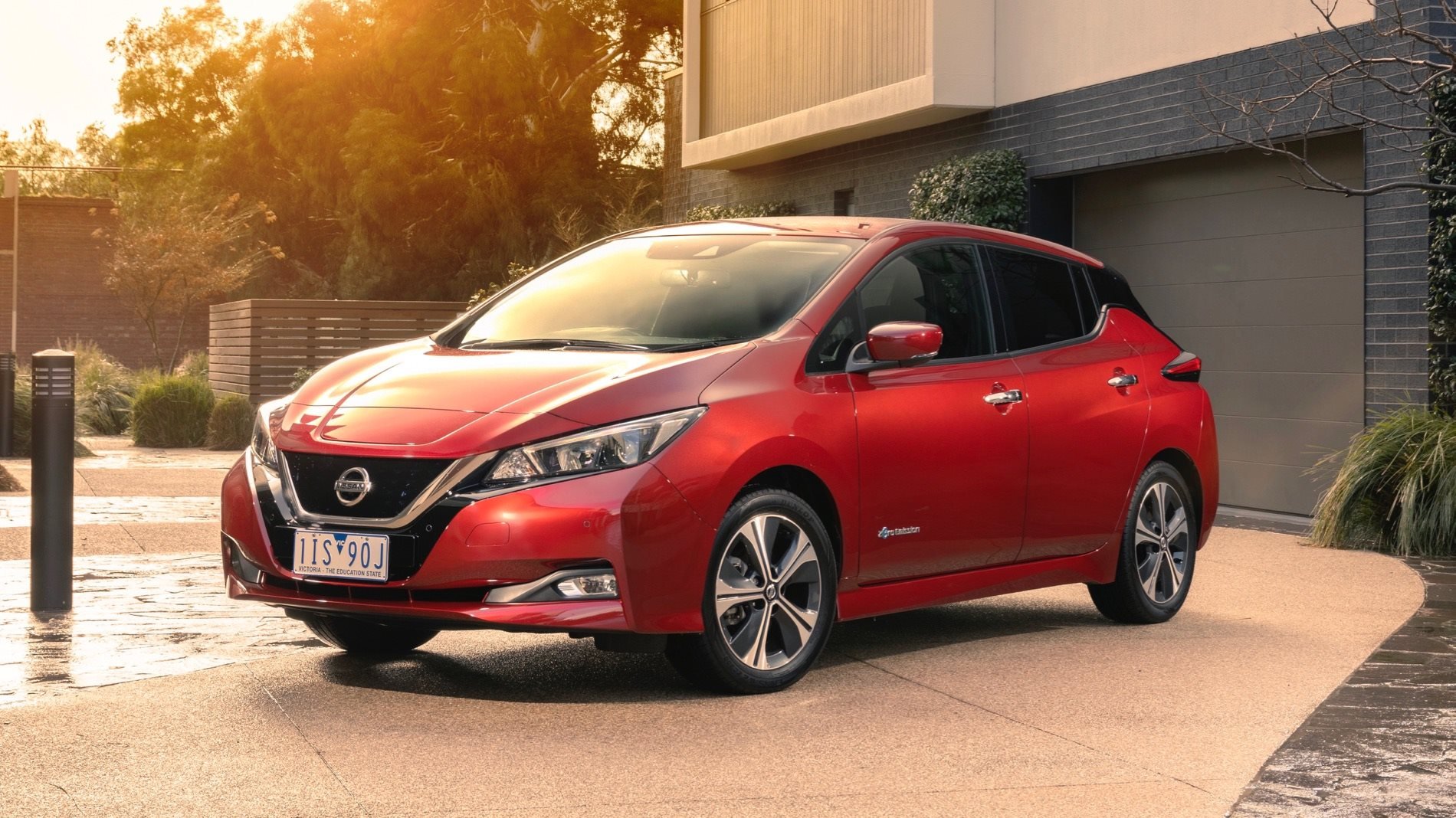Things we like
- Flexible charging compatibility
- Strong powertrain
- Roomy cabin
Not so much
- Torque steer and wheelspin unbridled
- Cramped driving position
- Doesn’t feel like a $50,000 car
The Wheels Verdict: Nissan has spun together a neat piece of EV technology and it’s much the same formula that made the first-gen Leaf so popular. But leaving aside the powertrain, it’s still not a challenger to what you can get for almost half the price, and shows that the industry is still a way from building an electric car for the masses.
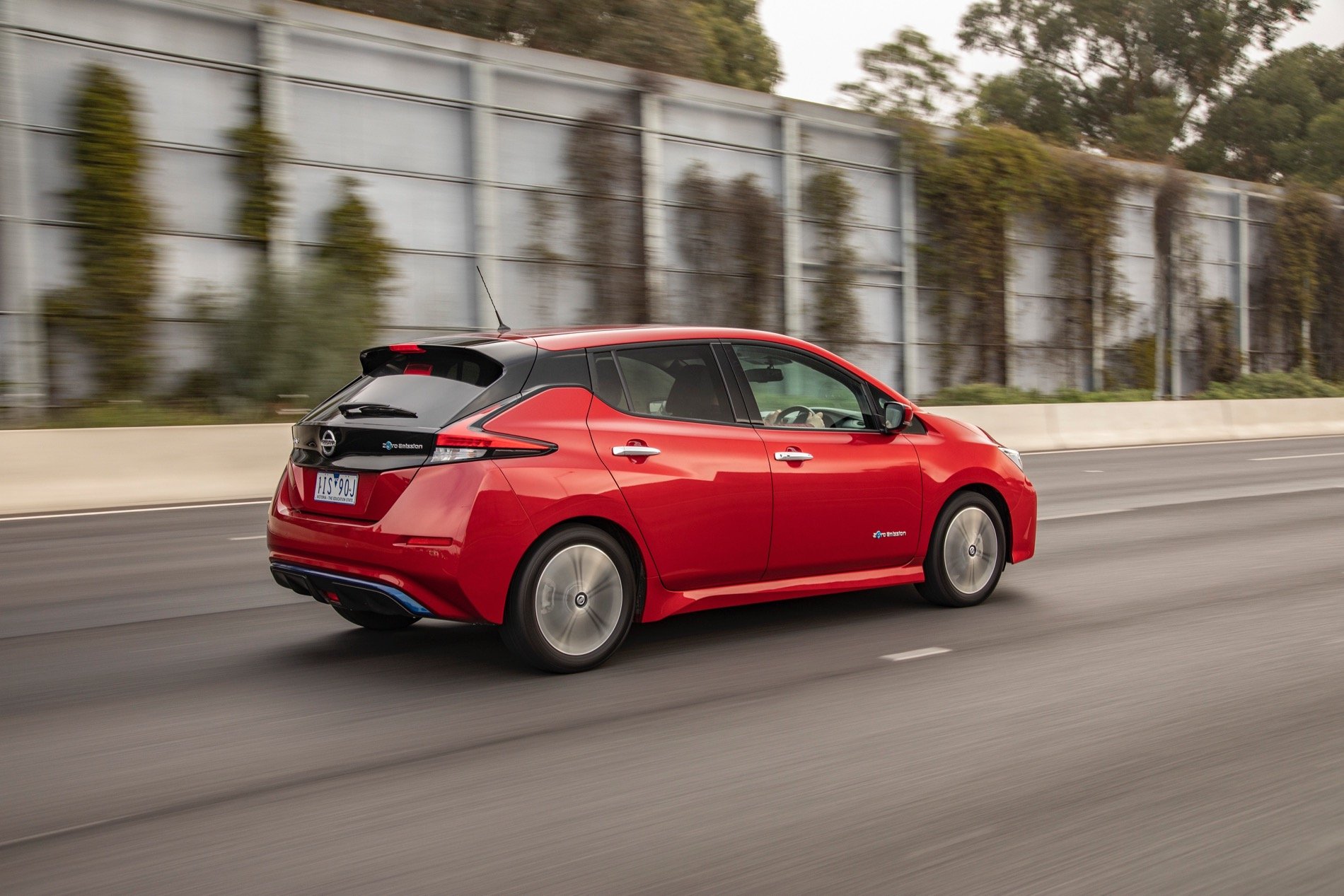
NISSAN LEAF REVIEW
The message delivered at Nissan’s Leaf launch in Australia was hammered home from the get go: once batteries are cheap enough, you’ll see these things everywhere. It’s a precept delivered with cult-like conviction that the only obstacle holding buyers back from electric vehicles is an eye-watering price tag. It assumes the Leaf is a better car than petrol and diesel equivalents. But is that putting the cart before the horse?
In its second-generation now, the Leaf has an advantageous headstart on many fledgling EVs. Just as Toyota has become the hybrid touchstone with its decades-old Prius, Nissan is carving its own green niche with the Leaf. Having sold 420,000 units since its inception, it is convincingly the world’s most popular electric vehicle.
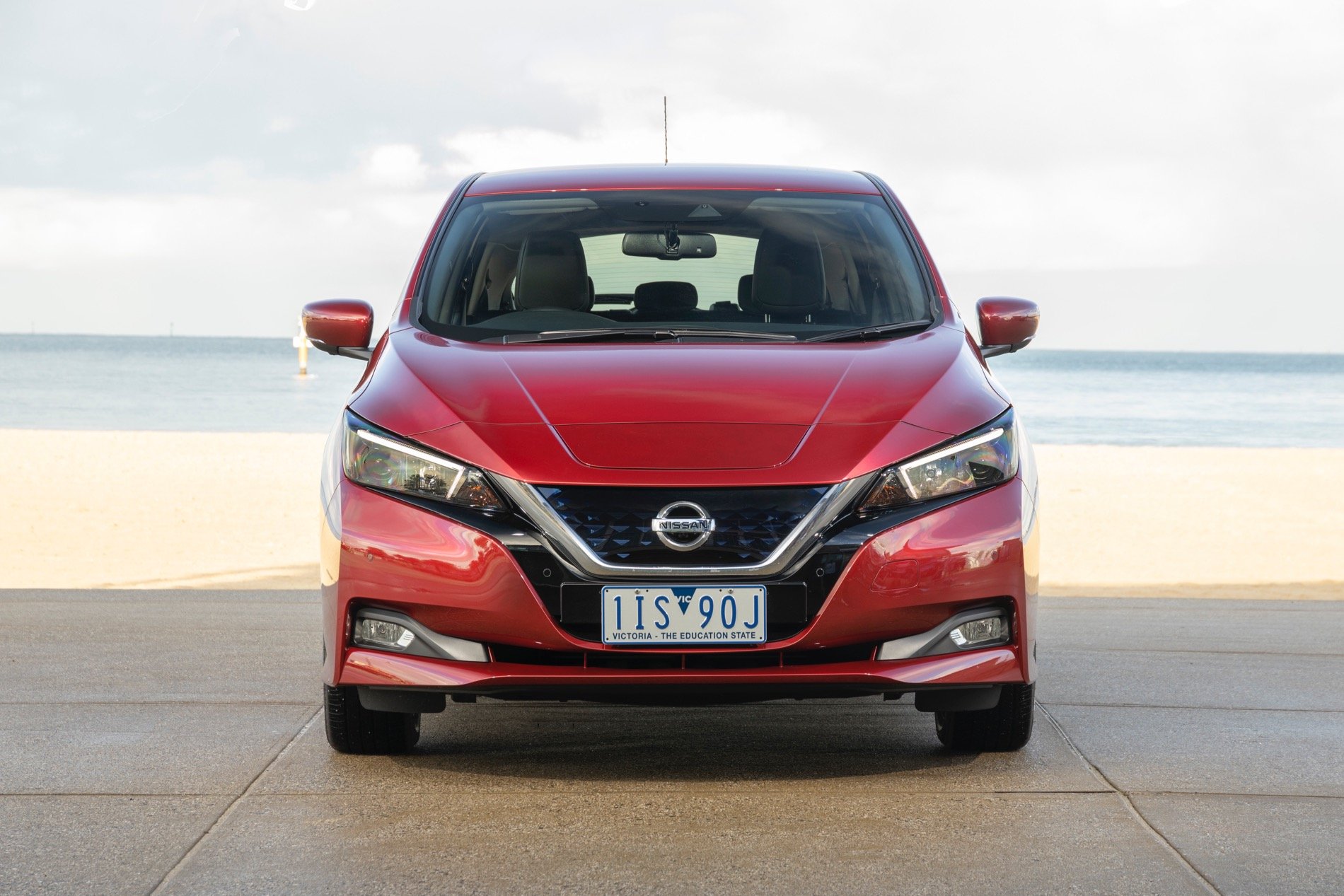
But is that enough to convince us in a slumping car market that this $50k hatch is worth its weight in lithium? Not quite.
Although it gets a slathering of standard gear that could make a bona fide greenie question its environmental credentials – full cowhide trim, heated seats all round, heated steering wheel, electric adjustment on the front pews and, finally, a good infotainment system – it is the balance of the scales that separates the Leaf from say, a Mazda 3, or just about any good combustion-engined hatch.

At almost the same size dimensionally – the Leaf 30mm longer, the Mazda 7mm wider – the Leaf has a more than 250kg deficit to deal with. It exposes underwhelming ride compliance that’s underpinned by an undercooked MacPherson front and torsion beam rear suspension setup. It feels unremarkable around town and underdamped over bumps when travelling with pace on country roads – not that you’d do much of that as the 40kWh battery’s 270km driving range evaporates quickly when cruising at 100km/h. And dynamically, it’s no challenger to any of the top three hatchbacks with a petrol motor. Curiously, it also suffers from a lack of agility at modest speeds, with a turning circle as big as that of the Toyota Rav4 SUV, though to its credit over the first-gen car, the steering feels direct and nicely connected to the wheels on turn-in.
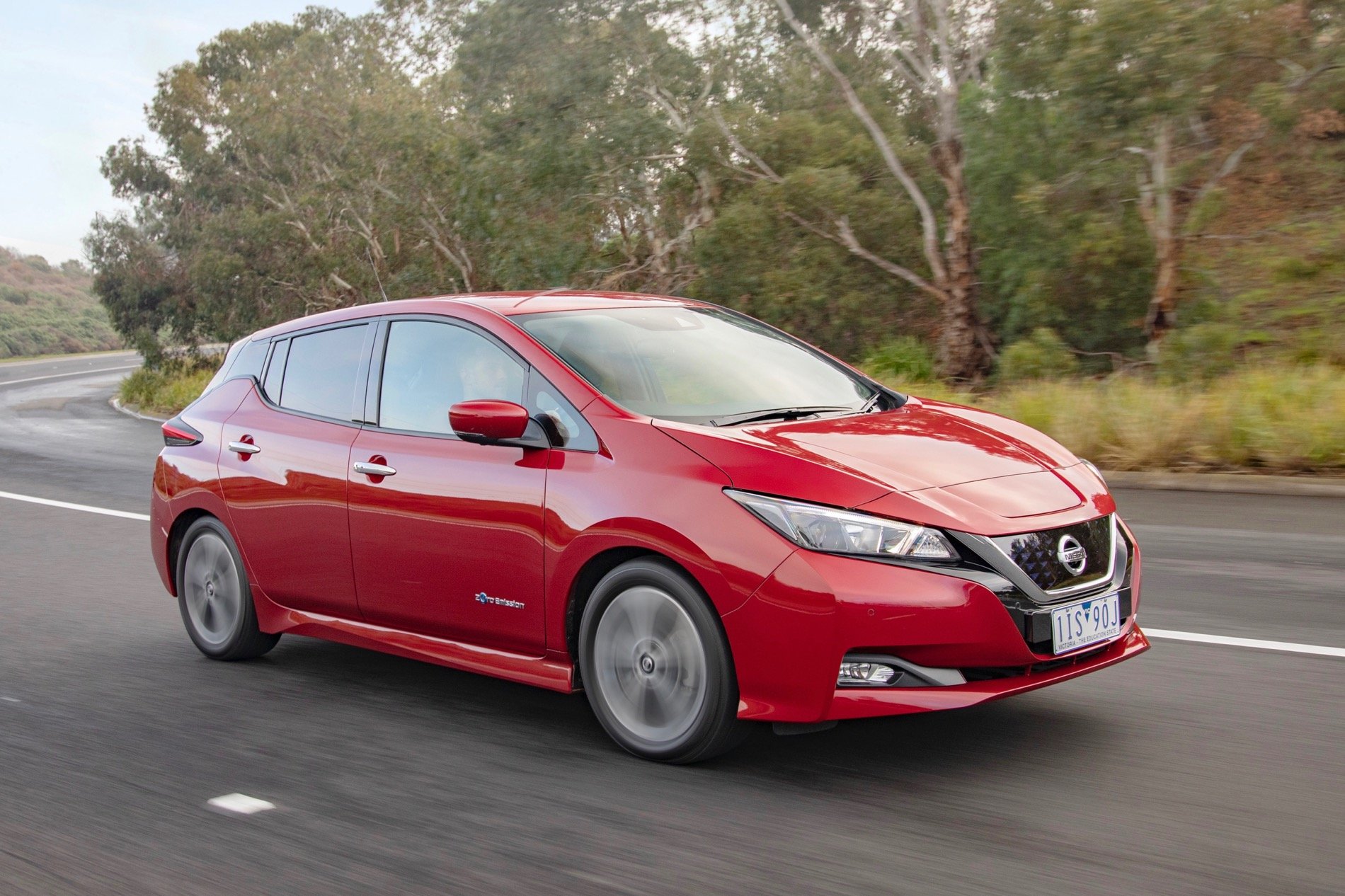
However, if you’re an early adopter or an anti-carbon warrior, it is one of the most accomplished emissions free (at the tailpipe) cars on the market for its price. The synchronous electric motor produces 110kW and 320Nm of torque, which gives it a surge of grunt to about 80km/h before slacking off to conserve energy. That whack of torque from 0rpm is appreciably massive and spins the front wheels too readily, shod as they are with eco-focused 215/50 R17 Dunlop Enasave EC300 rubber, but Eco mode (which should surely be its default state) dulls throttle response considerably. Even better is the e-Pedal button, that lets you drive almost brake-pedal free.
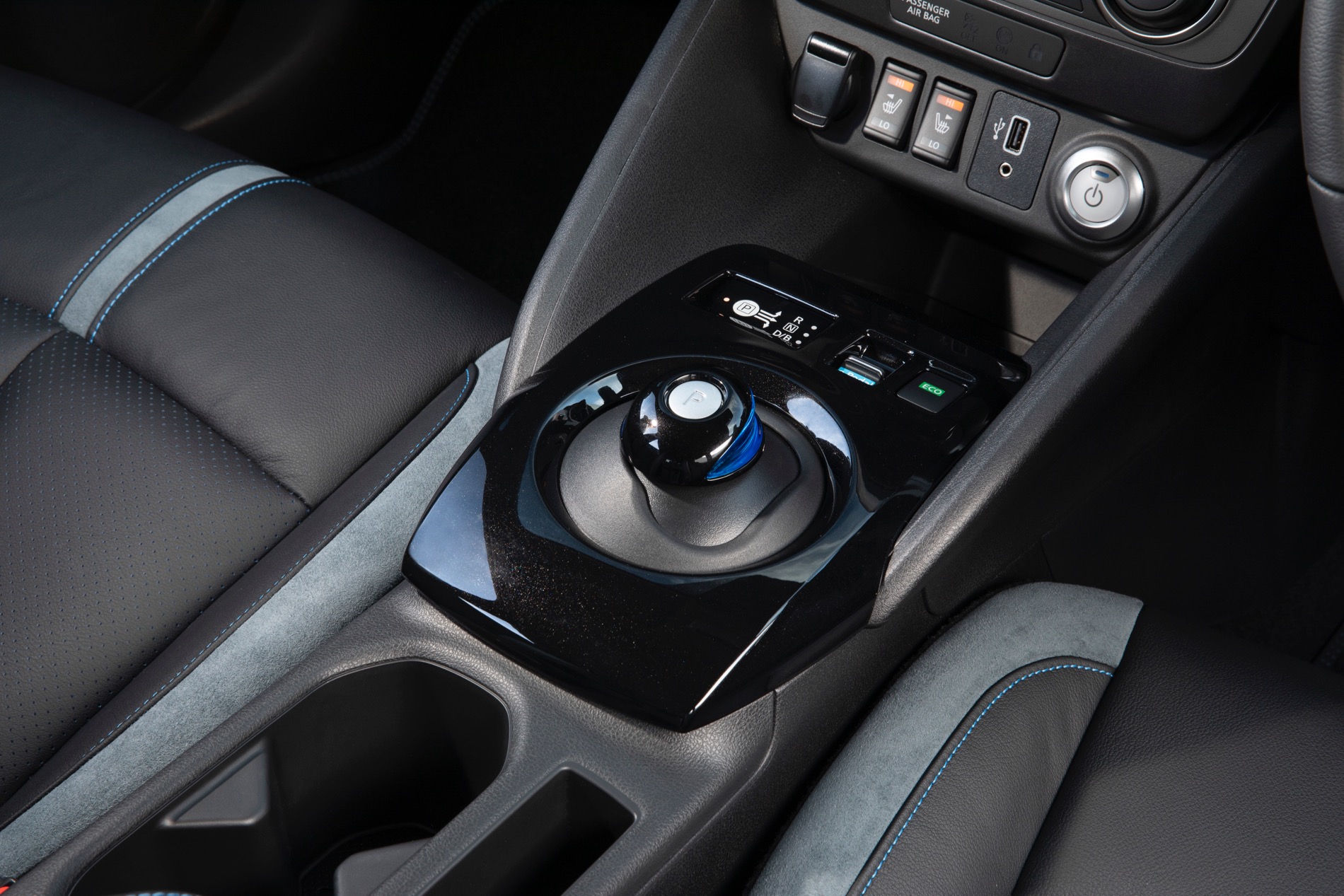
When selected, regenerative braking engages the instant you lift off throttle. It extends the driving range by converting momentum off throttle into energy the battery can store, but it takes some getting used to. Around town is where it works best, as you hardly need to shuffle between pedals in traffic, but on a country road, it can be a bit bitey when you just want to coast.
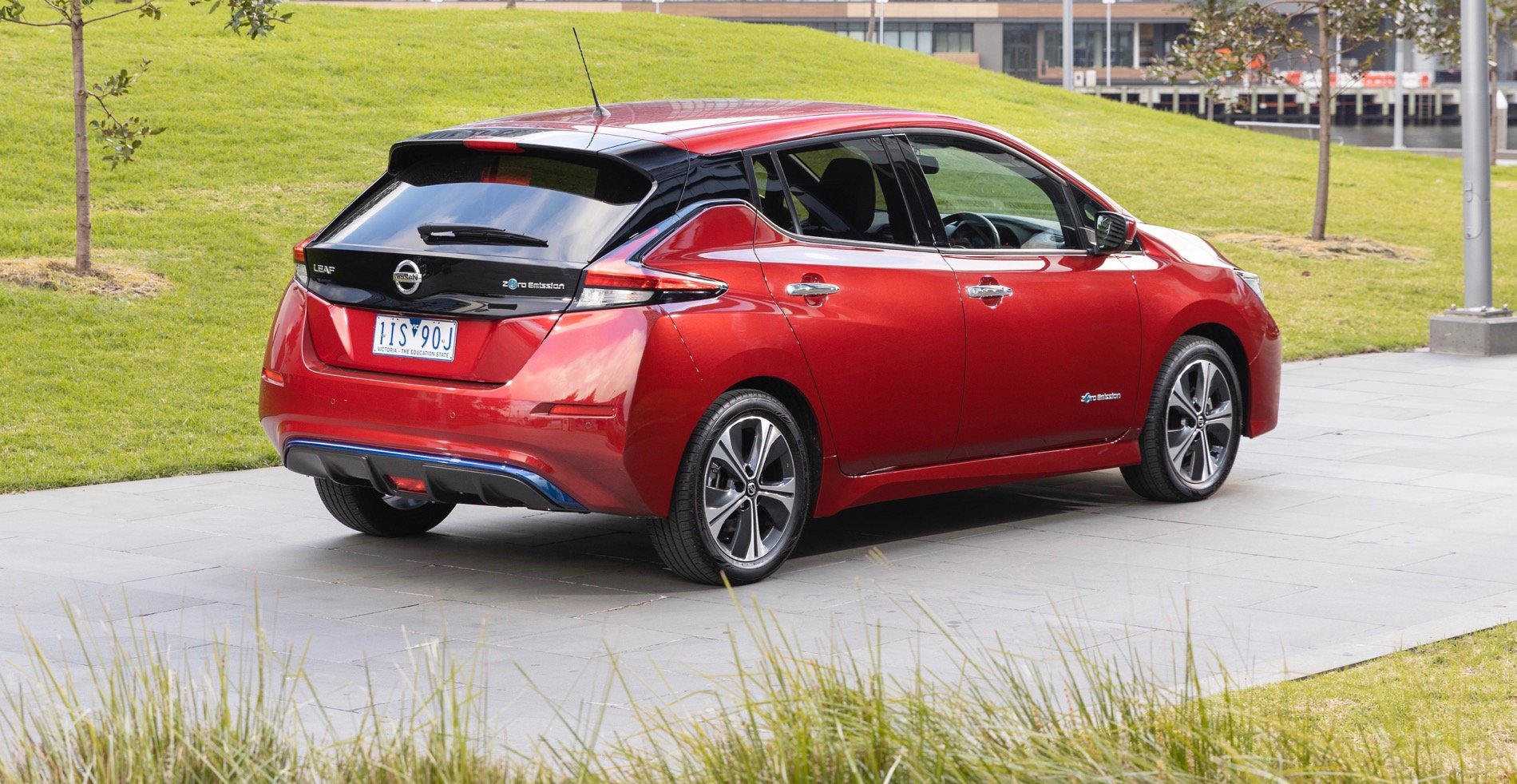
So the new Leaf doesn’t shape up as a great tourer, but it is a tidy town car. The interior is spacious for its size and it’s well equipped. We were particularly keen to try the infotainment system as we’d only driven the Leaf in overseas specification. The local Leaf, which comes in just one trim grade, gets an 8.0-inch infotainment screen that runs Apple CarPlay and Android Auto. Importantly, it is much easier to use than anything found in a Nissan before it. While that’s not saying much, this new unit is clear, crisp and the GPS is accurate. Unfortunately, we had issues pairing an iPhone with iOS 12 to CarPlay. It would load but drop out intermittently.
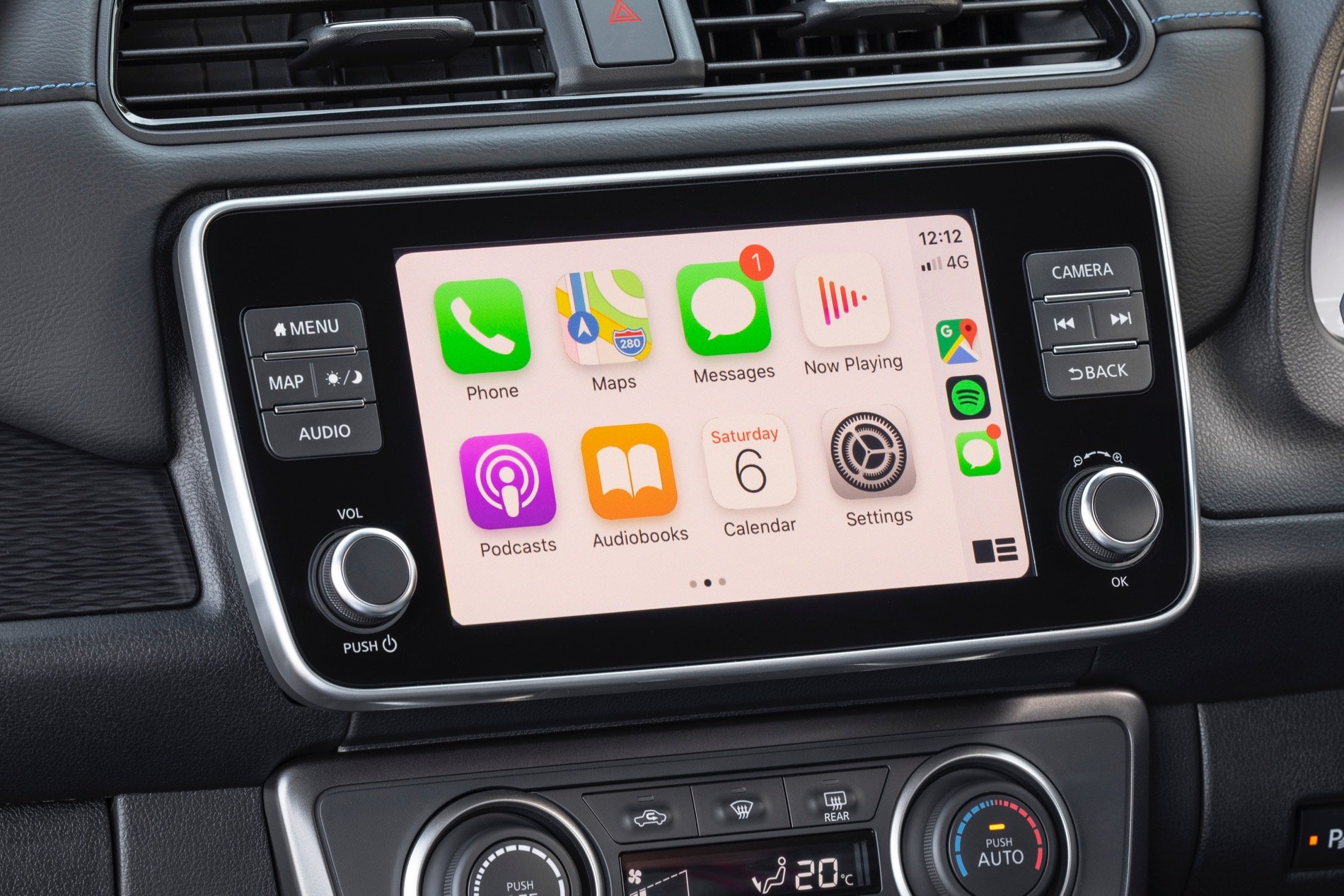
There’s a second screen – 7.0-inches wide on the diagonal – arranged in landscape orientation in within the main instrument binnacle. It isn’t integrated in the swish style of a Volvo or BMW, nor does it have the same calibre of graphics, but it does provide easy access to details on driving range, battery capacity and charging status.
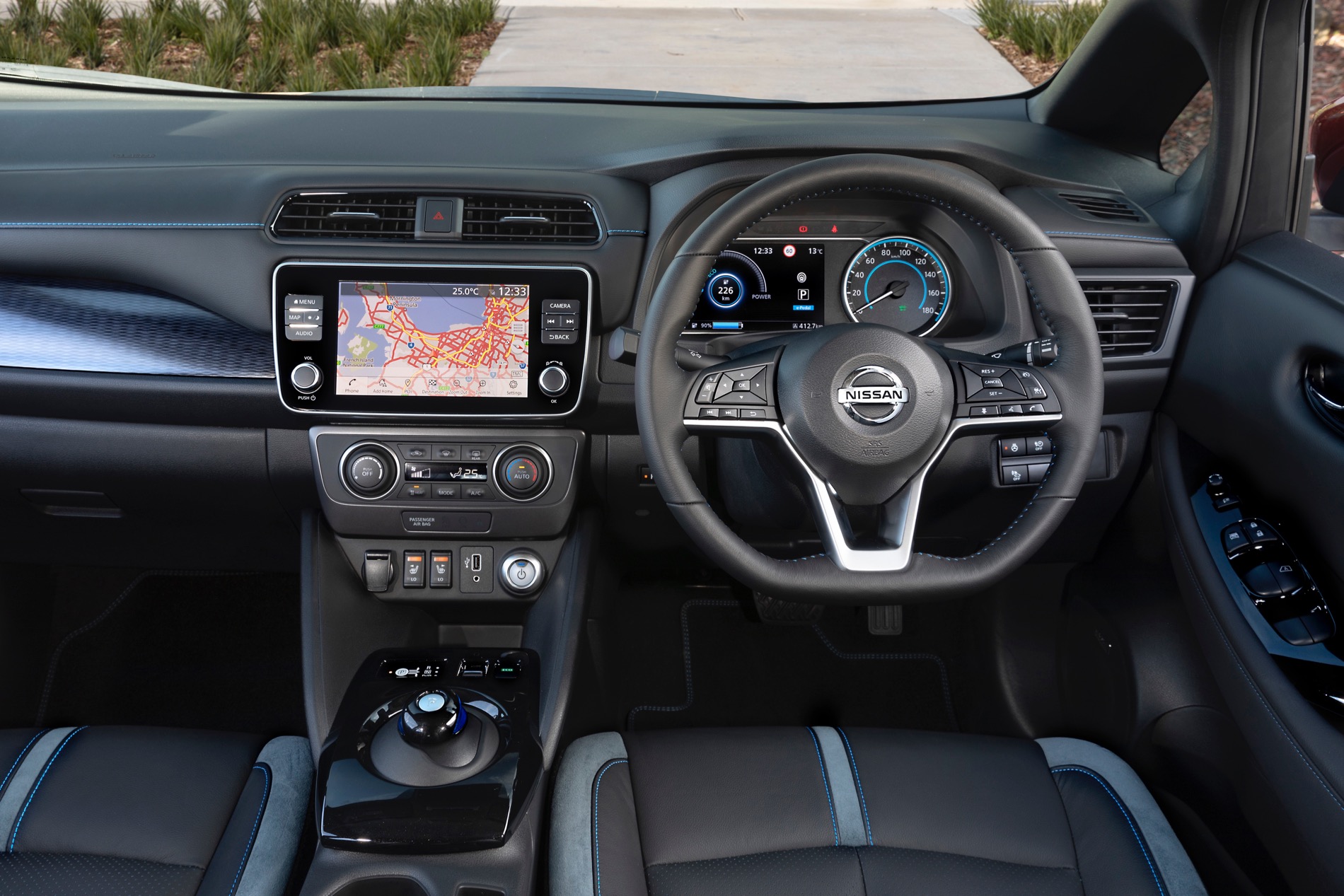
Despite a roomy cabin, ergonomics aren’t perfect by any stretch. The steering column only adjusts for tilt and the seats don’t have much adjustment to find a good driving position. They’re also a touch narrow and firm and the surroundings are made up with obvious parts-bin elements on the dash and plenty of boring plastic to fill the gaps. With the batteries located under a slightly propped-up rear-seat, foot space is pinched in the back, but the boot is mostly unaffected and measures 405L.
The battery pack remains small at 40kW, but in reality, for urban drivers, the 270km range is probably enough.
At an average 40km commute every day, you might want to charge it up once during the week for a run to the shops if you just plan on staying local. That can be achieved either through the included Mode 3 AC cable that gives you a full charge from empty in 7.4 hours via your own 32amp wallbox, the Mode 2 AC cable that can be plugged into a normal wall socket (but takes 24 hours to top up the battery), or the latest Mode 4 CHAdeMO DC plug. That’s the type of charging system found at quick-charge stations on the highway and it takes just 60 minutes to energise the battery to 80 percent capacity – the final 20 percent takes longer because fast-charging a lithium battery to 100 percent will harm the cells.
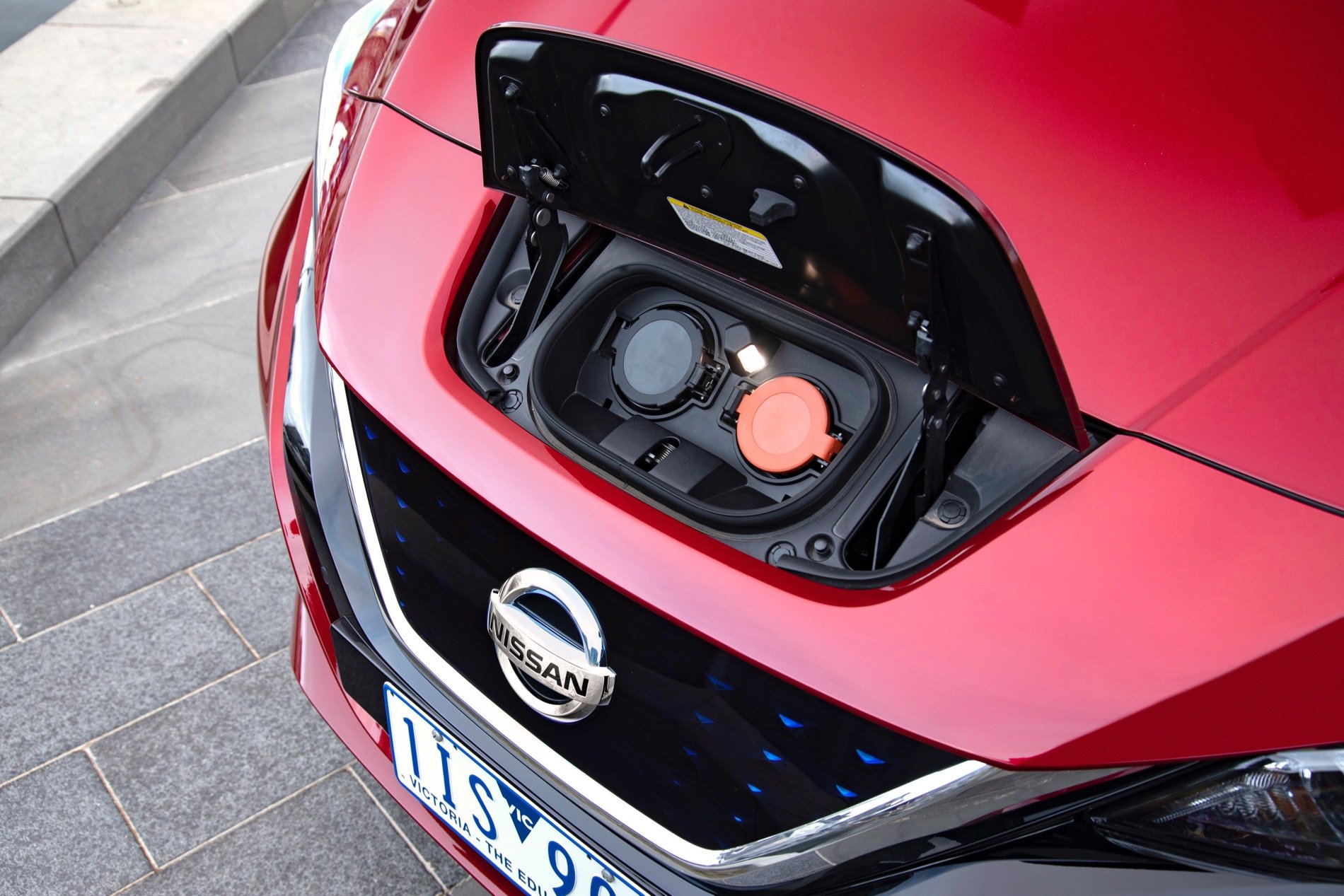
But it’s not just an energy sucker, as the Nissan Leaf is almost unique in that it has a bi-directional inverter. Though it is yet to be approved and regulated for use in Australia, all second-generation Leafs sold here come with the ability to act as a power generator.
Just imagine for a minute if your workplace offered free car charging during the day. On face value, it seems that you’d be nuts not to charge up at work on the boss’ dime and then plug the house into the car when you’re home for up to 40kW of free power at a maximum draw rate of up to 10kW/h.

In theory that’s good enough to power all the normal appliances, lights and an electric panel heater uninterrupted for four hours. You could even charge the car during off-peak and use it during peak. The thing is, there is an efficiency loss when charging and discharging, so you actually don’t have that many kilowatts to play with. So it might be more hassle than it’s worth and we’re also told the ‘vehicle-to-grid’ connection at the house could cost up to $13,000.
There’s also the potential problem of constant charging and discharging that the battery might degrade prematurely, but Nissan says even if you were to do this, they’d still honour the eight-year battery warranty. That’s pretty fantastic.
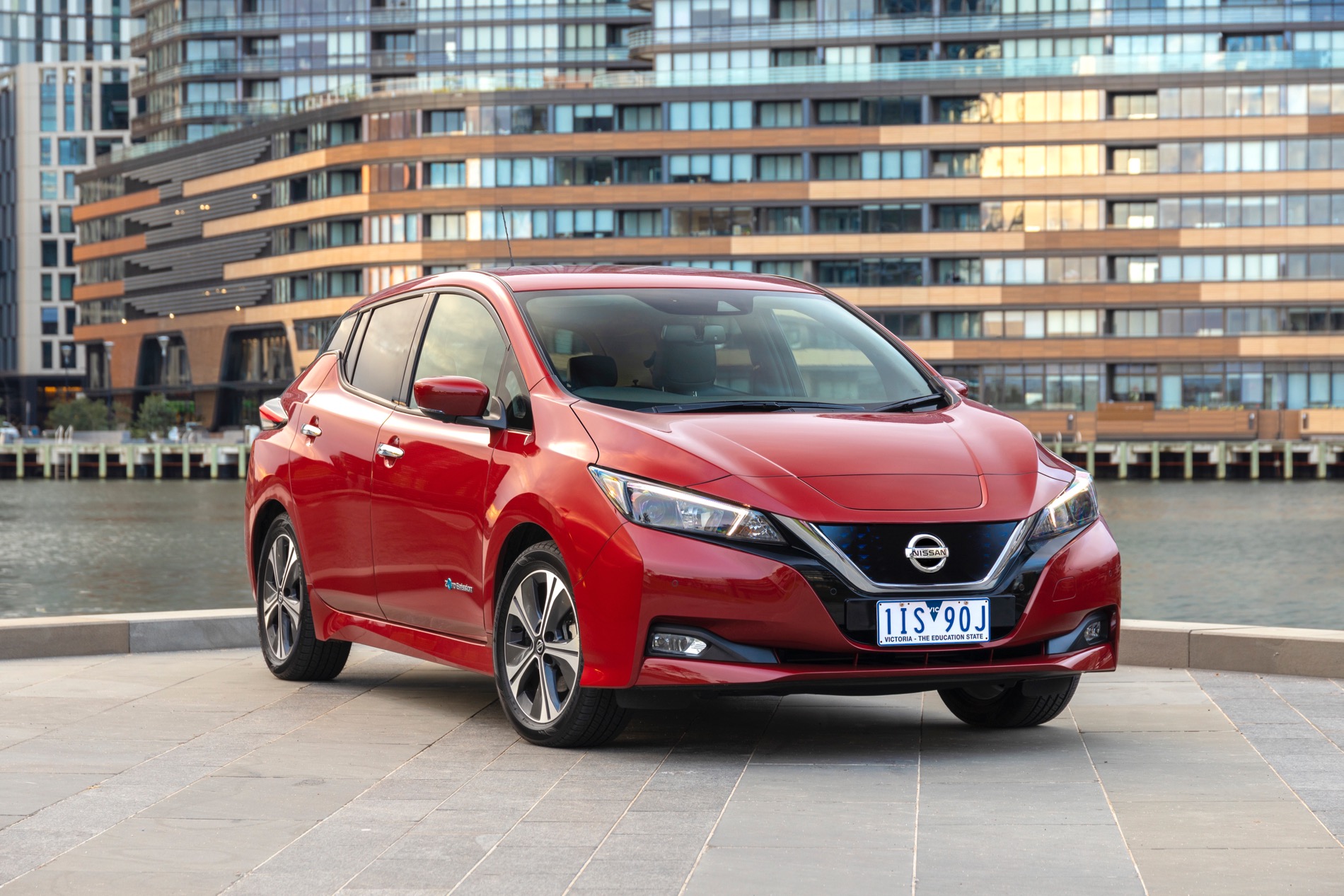
So what does all of this mean for the curious EV shopper? Well, the Leaf is a good piece of technology and an average family hatch. It’s not on par with a conventional car you’d pay about $15,000 less for, and that sum would cover you for about 80,000km in a typical family hatch that averages around 7L/100km.
But if the thought of spilling $15k worth of fossil into a car over the years hurts the environmentally-conscious part of the brain too much, the Nissan Leaf is one of the better – if still one of the few – EVs at this price point.
NISSAN LEAF VS RIVALS
Hyundai Ioniq, Renault Zoe, Hyundai Kona electric
NISSAN LEAF PRICE AND SPECS AUSTRALIA
- Model: Nissan Leaf
- Powertrain: AC synchronous motor 40kWh battery
- Max power: 110kW
- Max torque: 320Nm @ 0rpm
- Transmission: single-speed reduction gear
- Price: from $49,990
- On sale: Now
Things we like
- Flexible charging compatibility
- Strong powertrain
- Roomy cabin
Not so much
- Torque steer and wheelspin unbridled
- Cramped driving position
- Doesn’t feel like a $50,000 car

